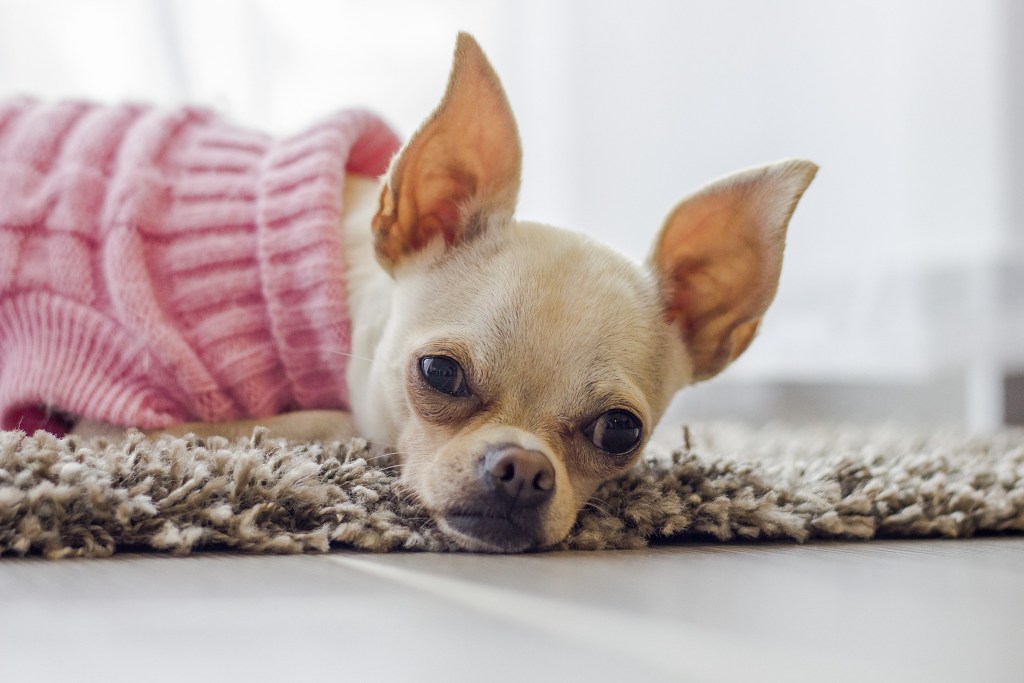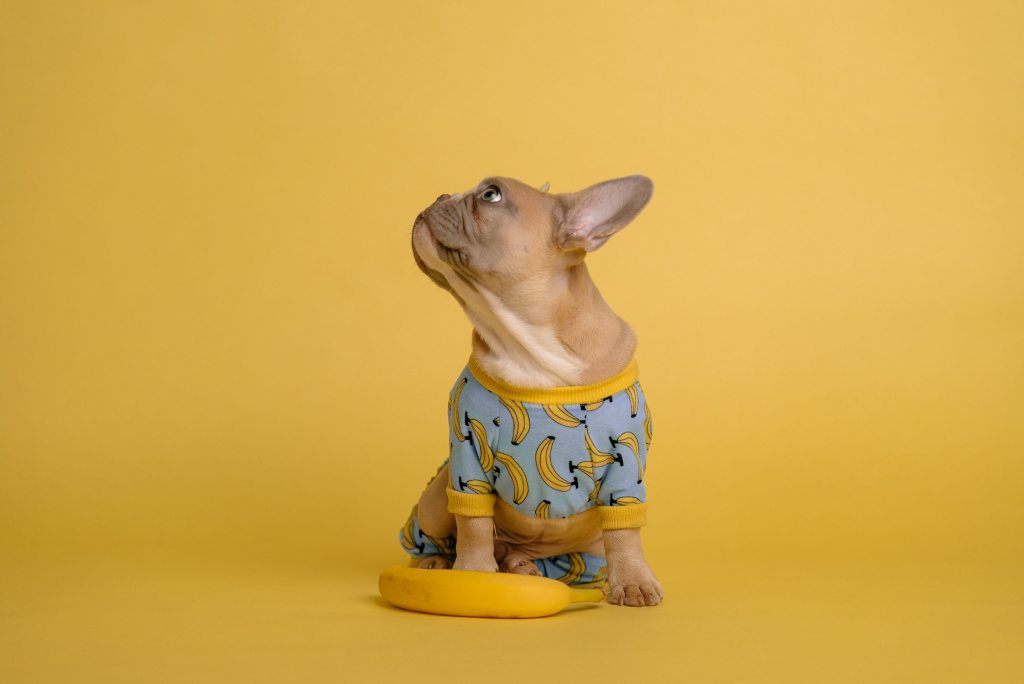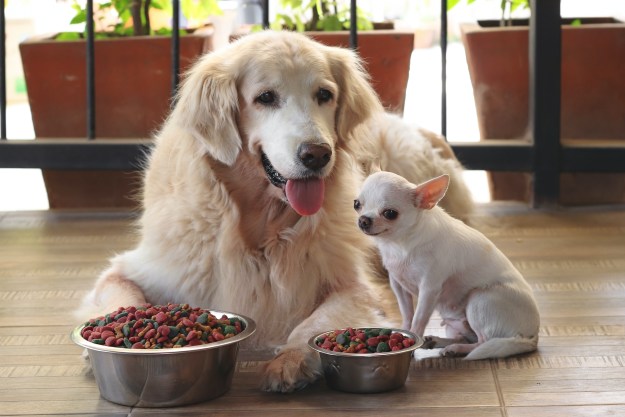The second your human child outgrows their clothes, you might look for a donation box. But you can actually repurpose these items in your own family by making them into dog clothes. That's right, handing down some baby clothes to your fur baby isn’t all that tricky. With just a few adjustments and a little time, you can turn nearly any onesie into a cute, comfy outfit for your pup.
Grab your old onesies, your pup, and your sewing machine: You’re about to learn how to make dog clothes from baby clothes. Even better: You may even have everything you need already in your home!
You don’t even need to be an experienced sewer to get this project done — a simple hand-done stitch will do the job just fine! And remember, recycling used items is one of the most sustainable ways to reduce waste (and save money).

Find the correct size of baby clothes
If you’re really lucky, you just might have a perfectly sized onesie for your dog in your home. It helps to plan ahead if your child (the human one) is still young, so you know what size of their clothing you should be looking to save.
Although every dog’s body is different and may not fall easily into these categories, you can start your search for the correct size based on your dog’s weight (via OurEverydayLife):
- Newborn: for dogs up to 7 pounds
- 0-3 months: for dogs 7-12 pounds
- 3-6 months: for dogs 12-16 pounds
- 6-9 months: for dogs 16-20 pounds
- 9-12 months: for dogs 17-22 pounds
- 12-18 months: for dogs 22-27 pounds

How to make dog pajamas out of baby clothes
Here comes the fun part! Once you have all your materials ready to go, all that’s left is to actually make your pup’s new clothes. This is how to make dog clothes from baby clothes:
Step 1: Gather your materials.
Although your exact steps and materials depend on the style of shirt or onesie you make for your dog, every project will need a few basics. Don’t forget your onesie and the dog, though your furry friend will only need to model their new shirt for a few moments while you take measurements. They still might expect a treat as a payment, as models do.
Step 2: Try it on for size.
Before you start modifying your onesie, make sure it’ll be a comfy fit for your dog. You can measure your pooch’s length from neck to tail, as well as their chest girth, but these measurements may not be as useful when comparing them with baby clothes sizes.
Step 3: Measure and cut the onesie.
While you keep your dog semi-occupied with a few treats, use your fabric pencil to make any guides you’ll need for cutting and sewing your pup’s PJs. To make a true onesie for your fur baby, most of your work will be around the tail of the garment. Feel for the base of your pup’s tail, then mark a wide enough circle on the onesie to give them some extra wagging room.
Step 4: Hem the edges.
The edges of your dog’s new onesie will be smooth and protected if you decide to hem them (especially important if your pup likes to chew). To do this, you’ll fold back 1/4 of an inch around any cut edges, then sew straight through both layers, following your cut. You can use a sewing machine or sew your hems by hand — it’s up to you! It'll look super professional once you're done.
There are so many perks to making your own dog clothes out of baby clothes, including the positive environmental impact of recycling. Both your pup and the planet will benefit from this fun DIY. You’ll get a chance to practice your sewing and measuring skills, and just think of how sweet your fur baby will look in their new pajamas!
Editors' Recommendations
- The Best Dry Dog Food of 2023 for a Balanced Diet
- How to stop a dog from peeing in their crate for good in 5 easy-to-follow steps
- How to tell if your older dog’s health decline means the end is near
- Is your dog barking nonstop? Here’s how to get your noisy pup under control
- How hot does concrete get in the sun? The answer might shock you




